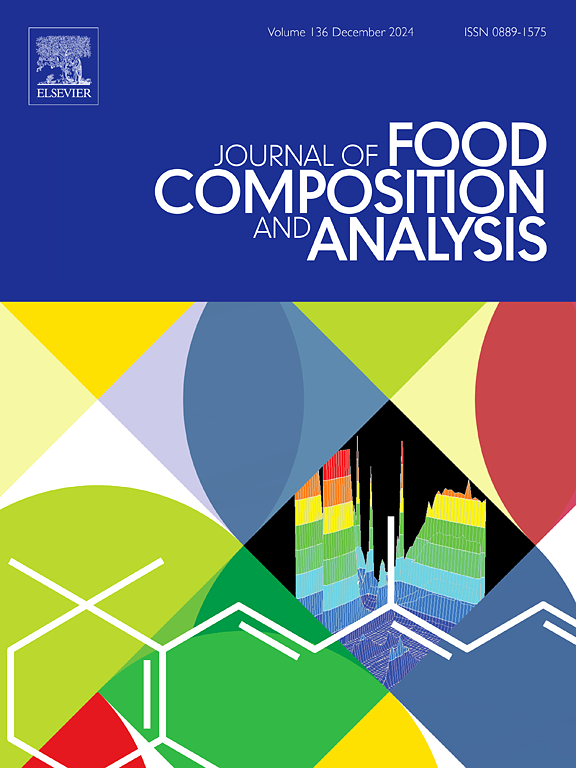Nutritional constituents of rice velvet shrimp, Metapenaeopsis andamanensis (Decapoda:Penaeidae) off southeastern Arabian sea, India
IF 4
2区 农林科学
Q2 CHEMISTRY, APPLIED
引用次数: 0
Abstract
Metapenaeopsis andamanensis, the deep-sea penaeid shrimp is a significant crustacean resource and substantially contributes to the Indian fishery and marine economy. This study investigates the nutrient composition of M. andamanensis, focusing on comparative differences between males, immature females, and mature females, along the southeastern Arabian sea. Seventeen amino acids were identified, including essential amino acids (EAA) and non-essential amino acids (NEAA). Lysine (1.98–2.56 g100g−1) was the most abundant EAA, while glutamic acid dominated the NEAAs. Immature females had the highest EAA content (8.46 g100g−1). Lipid varied significantly, with mature females showing the highest level (0.57 %). Additionally, higher concentration of polyunsaturated fatty acids (PUFA) were observed in mature females, particularly eicosapentaenoic acid (3.31–15.30 %) and docosahexaenoic acid (7.94–14.99 %). Mineral analysis indicated significant differences in calcium and phosphorous. The higher combined Ca and P value in M. andamanensis supports bone health and metabolic functions in humans. These findings reveal the nutritional variations in M. andamanensis and their implications for dietary and ecological studies. Overall, M. andamanensis is a valuable source of proteins, long-chain PUFAs, and limiting elements, contributing to its potential as a nutritious food item. The findings highlight the importance of intrinsic and extrinsic factors in influencing its nutrient composition.
印度东南阿拉伯海米绒虾的营养成分
本文章由计算机程序翻译,如有差异,请以英文原文为准。
求助全文
约1分钟内获得全文
求助全文
来源期刊

Journal of Food Composition and Analysis
工程技术-食品科技
CiteScore
6.20
自引率
11.60%
发文量
601
审稿时长
53 days
期刊介绍:
The Journal of Food Composition and Analysis publishes manuscripts on scientific aspects of data on the chemical composition of human foods, with particular emphasis on actual data on composition of foods; analytical methods; studies on the manipulation, storage, distribution and use of food composition data; and studies on the statistics, use and distribution of such data and data systems. The Journal''s basis is nutrient composition, with increasing emphasis on bioactive non-nutrient and anti-nutrient components. Papers must provide sufficient description of the food samples, analytical methods, quality control procedures and statistical treatments of the data to permit the end users of the food composition data to evaluate the appropriateness of such data in their projects.
The Journal does not publish papers on: microbiological compounds; sensory quality; aromatics/volatiles in food and wine; essential oils; organoleptic characteristics of food; physical properties; or clinical papers and pharmacology-related papers.
 求助内容:
求助内容: 应助结果提醒方式:
应助结果提醒方式:


